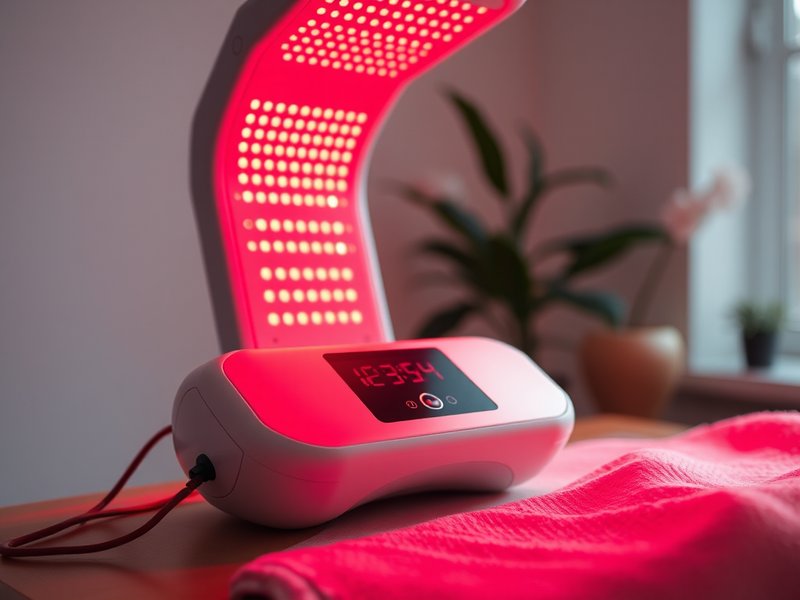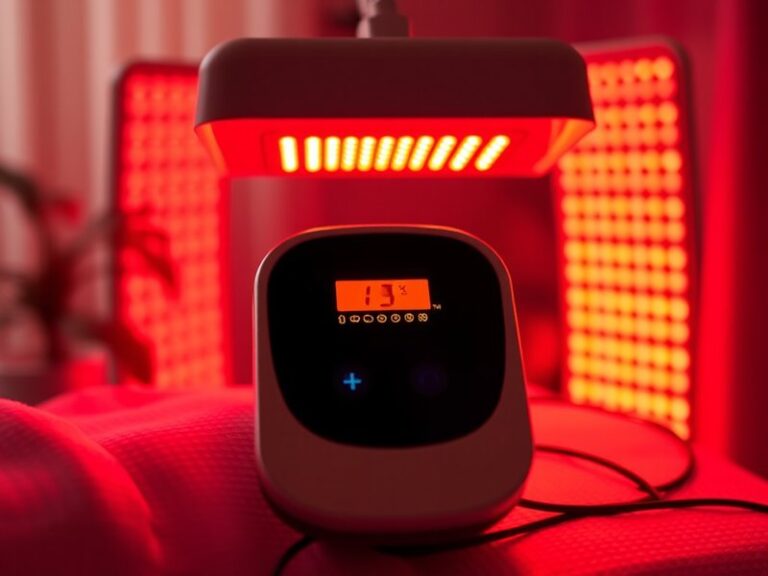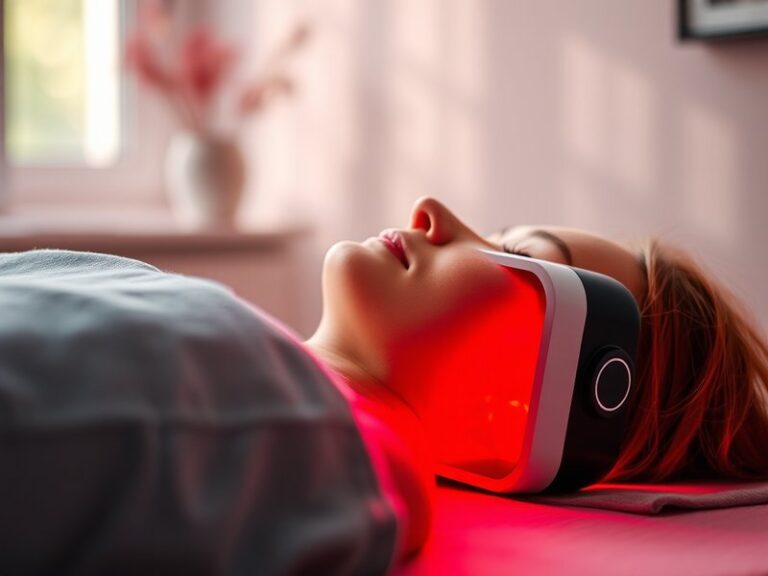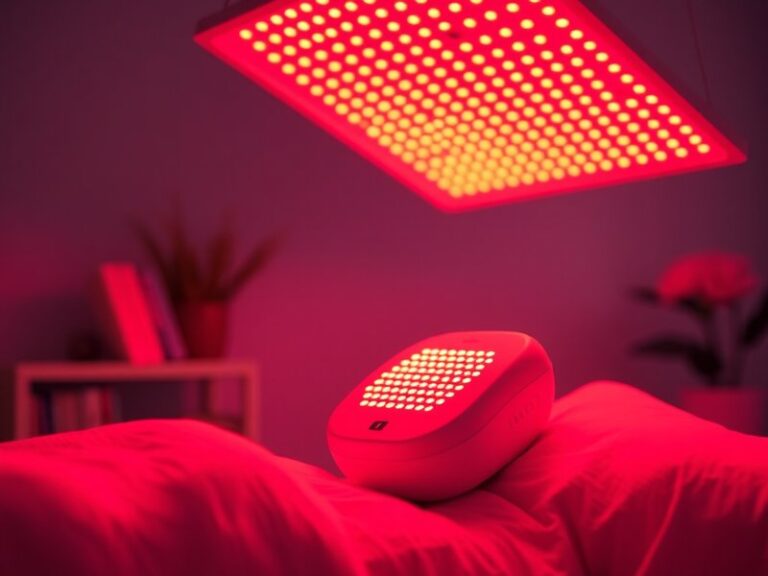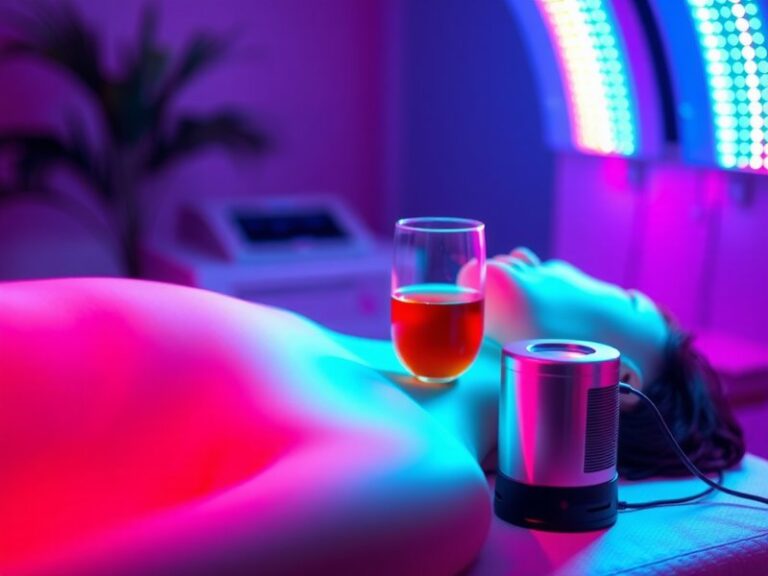What Do Red Light Therapy Do?
What Do Red Light Therapy Do?
Have you ever considered how light can be used as a healing tool? Red light therapy (RLT) has garnered attention in recent years as a non-invasive treatment option for a variety of health concerns.
This article will explore what red light therapy is, its benefits, the feasibility of its use, alternative options, and answer frequently asked questions to provide a comprehensive overview of this exciting therapy.
Key Takeaways
- Red light therapy involves the use of specific wavelengths of light to promote healing and reduce pain.
- It has been found to improve skin health, relieve pain, and enhance muscle recovery.
- While generally safe, some considerations and precautions are important to bear in mind before starting therapy.
What is Red Light Therapy?
Red light therapy is a form of photobiomodulation that utilizes low-level wavelengths of red light, typically between 630 and 680 nanometers, to penetrate the skin. This therapy aims to stimulate cellular function, thereby promoting healing, reducing inflammation, and aiding in tissue repair.
Get the scoop on Does Red Light Therapy Burn Fat?
Originally used in medical settings, RLT has gained popularity in home settings through devices such as LED lamps and handheld units. Researchers believe that the light energy absorbed by the cells can enhance mitochondrial function, leading to increased ATP (adenosine triphosphate) production, which is crucial for cell energy.
The non-invasive nature of red light therapy makes it an appealing option for many individuals seeking relief from various conditions.
What are the Benefits of Red Light Therapy?
Red light therapy offers several advantages that make it an attractive alternative for many health enthusiasts and patients alike. Here, we will delve into some of the most notable benefits.
Improvement in Skin Health
One of the most popular uses of red light therapy is its ability to enhance skin appearance. By stimulating collagen production, RLT can reduce the appearance of wrinkles, fine lines, and scars. Many users report improved skin tone and texture, as well as reduced acne and other skin conditions.
Pain Relief
RLT has been shown to help alleviate chronic pain conditions, such as arthritis or neuropathy. The treatment can reduce inflammation in affected areas, leading to reduced pain and improved mobility. Studies have indicated significant pain relief in patients who undergo regular therapy sessions.
Enhanced Muscle Recovery
Athletes and fitness enthusiasts frequently turn to red light therapy to accelerate recovery times after intense workouts. By promoting blood flow and reducing soreness, RLT aids in faster recovery of muscles and tissues, helping to optimize performance.
Boosted Wound Healing
The wound healing properties of RLT are being increasingly recognized. The therapy can help speed up the healing process for cuts, burns, and other injuries by enhancing cellular repair mechanisms, making it beneficial for both superficial and deeper tissue injuries.
Support for Hair Growth
Emerging evidence suggests that red light therapy may assist in stimulating hair follicles and promoting hair growth. This application is gaining traction in the treatment of conditions such as androgenetic alopecia (common form of hair loss), with individuals reporting thicker hair and increased hair density.
Is it Possible to Do Red Light Therapy at Home?
Yes, red light therapy can be effectively performed at home using specialized devices, such as LED panels, light beds, or handheld devices. This accessibility allows individuals to incorporate RLT into their wellness routines without regularly visiting a clinic.
What are the Advantages of Doing Red Light Therapy at Home?
Performing red light therapy at home brings several advantages, including:
Convenience
Having access to a red light device at home allows for flexible scheduling. Users can incorporate sessions into their daily routines without the need for appointments.
Cost-Effectiveness
Investing in a personal red light therapy device can be more economical over time compared to frequent visits to professional clinics or spas.
Privacy
Home treatments offer a level of privacy that may appeal to individuals uncomfortable with seeking therapy in public settings.
What are the Disadvantages of Doing Red Light Therapy at Home?
Although red light therapy at home has its benefits, there are some disadvantages and challenges to consider.
Lesser Treatment Range
Professional clinics often provide higher-powered devices that may deliver more effective results compared to home alternatives, which could limit the efficacy of at-home treatments.
Need for Consistent Usage
Results from at-home devices require regular commitment and consistency. Inconsistent use may lead to slower progress or diminished results.
Lack of Professional Guidance
Self-administered therapy may lack the personalized approach of professional treatments, where trained practitioners can tailor sessions to individual needs and monitor progress.
What are the Things to Consider Before Trying Red Light Therapy?
Prior to starting red light therapy, several important factors should be considered.
Skin Sensitivity
Individuals with sensitive skin or certain skin conditions should consult with a healthcare provider before beginning therapy to ensure the treatment is appropriate for their specific situation.
Medical Conditions
Those with pre-existing medical conditions or on medications that alter skin sensitivity or blood pressure should seek medical advice to ascertain the safety of red light therapy.
Device Quality
The effectiveness of treatment can vary significantly depending on the quality of the device. Users should research and select reputable brands that meet safety and efficacy standards.
Learn the whole story Is Omnilux Therapy?
Treatment Duration
Understanding the recommended duration and frequency for sessions is essential. Overuse can lead to skin irritation or diminished effectiveness, so adhering to guidelines is key.
What are the Alternatives to Red Light Therapy?
For individuals seeking alternatives to red light therapy, several other options can be considered for skin care, pain management, or recovery.
Cryotherapy
Cryotherapy, or cold therapy, involves exposing the body to extreme cold to reduce inflammation and address pain. This technique can be particularly effective for athletes in recovery and overall muscle soreness.
Infrared Therapy
Similar to red light therapy, infrared therapy uses light energy to penetrate deep into the tissues. This treatment can promote relaxation, alleviate pain, and improve circulation.
Ultrasound Therapy
Ultrasound therapy employs sound waves to promote tissue healing and manage pain by stimulating blood flow. It is often used in physical therapy settings for soft tissue injuries.
Conclusion: Is it Recommended to Try Red Light Therapy?
Red light therapy presents a promising option for individuals seeking non-invasive treatments for skin health, pain relief, and muscle recovery. While there are numerous benefits associated with this therapy, personal considerations and the choice of device must be evaluated. Consulting with a healthcare professional can help individuals determine if red light therapy aligns with their health goals.
Frequently Asked Questions
Is red light therapy safe?
Red light therapy is generally considered safe for most individuals, but it is advisable to consult with a healthcare provider prior to starting treatment, especially if you have underlying health issues.
How long does it take to see results from red light therapy?
Results can vary widely among individuals. Typically, users may begin to notice improvements after several sessions, but it may take weeks or months for significant results, depending on the condition being treated.
Can I do red light therapy every day?
Daily use can be beneficial for many, but it’s essential to follow the manufacturer’s guidelines and listen to your body to avoid potential overuse issues.
Are there any side effects associated with red light therapy?
Side effects are minimal, but some users report mild redness or irritation at the treatment site. These effects usually resolve quickly.
What should I look for in a red light therapy device?
When choosing a device, consider factors such as wavelength, power density, treatment area size, and manufacturer reputation to ensure effective and safe use.
